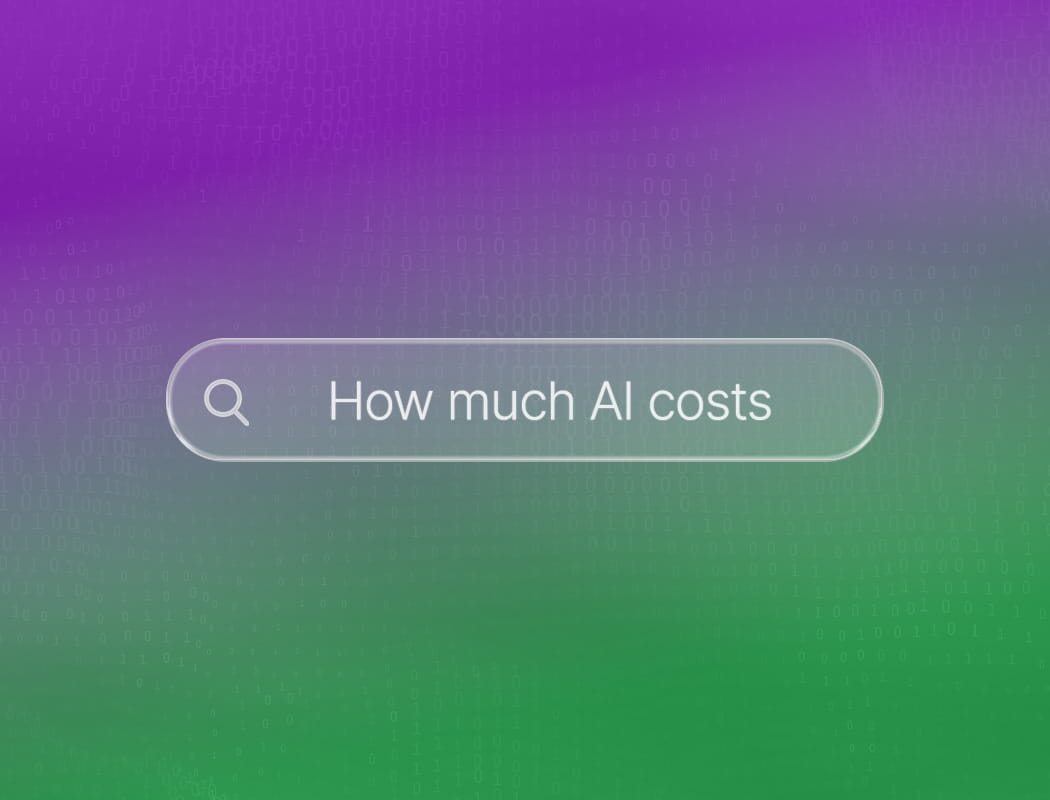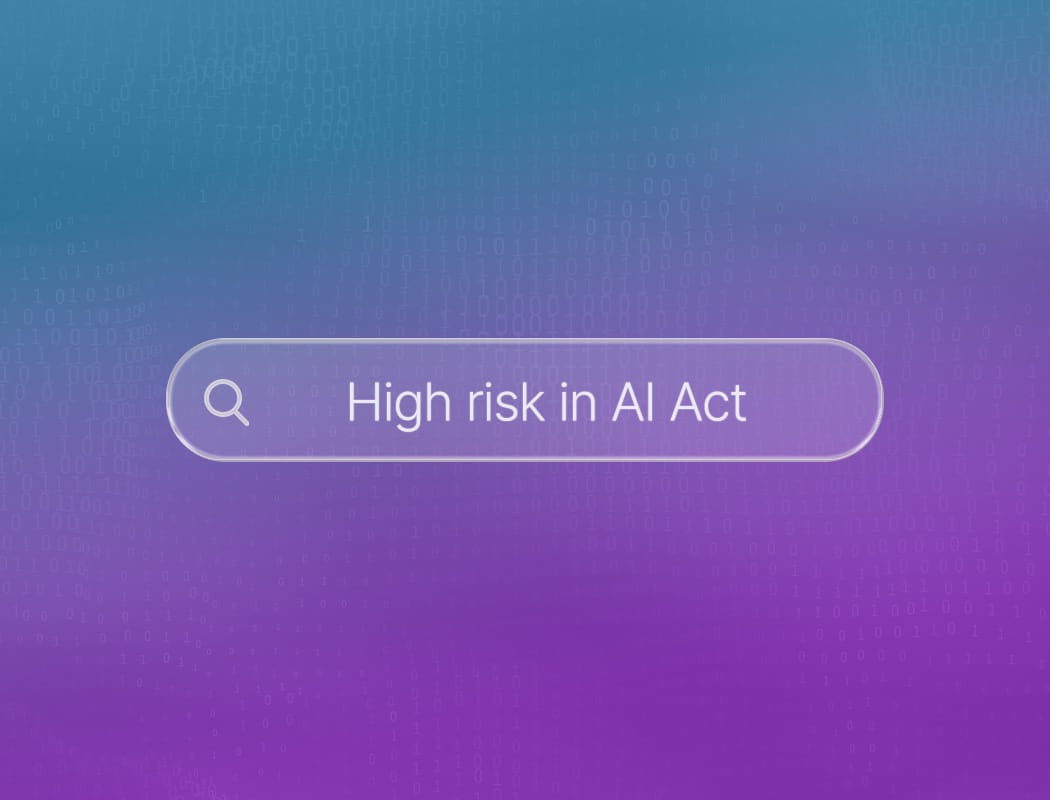How much does AI cost?
The price of AI is not set in stone. Some tools are free to use, while others can cost thousands each month. It all depends on what you need and how much you plan to scale.
For a small business, AI cost might just be a monthly subscription. For a large company, it could mean custom solutions, with large subscription fees.
In addition to subscription fees, some AI tools may require integration costs, especially if they need to connect with your existing systems. This could involve hiring developers, purchasing APIs, or paying for data preparation services to ensure the AI performs well.
There’s also the cost of ongoing maintenance and training. AI models don’t stay accurate forever. Depending on your use case, you might need a dedicated team to monitor performance, handle security updates, and retrain the model as your business evolves.

AI cost breakdown
This is a table breaking down the potential costs of AI, from personal tools like ChatGPT to enterprise-level custom AI systems. It includes typical price ranges and what each tier usually involves.
| Type of AI use | Description | Typical cost range | Examples |
|---|---|---|---|
| Personal use (Free tier) | Basic access to AI chatbots with limited features and usage caps. | $0/month | ChatGPT Free, Google Gemini Free, Claude Free |
| Personal use (premium tier) | More advanced models, faster responses, and priority access. | $20–$30/month | ChatGPT Plus ($20), Claude Pro, Gemini Advanced |
| Small business tools | Subscription-based AI tools for productivity, marketing, or analytics. | $30–$500/month | Jasper, Copy.ai, Notion AI, Grammarly Business |
| Mid-size business AI SaaS | Specialized AI tools (e.g., CRMs, customer support bots, data analysis). | $500–$5,000/month | HubSpot AI, Zendesk AI, Salesforce Einstein |
| API usage (e.g., OpenAI API) | Pay-per-use access to AI models for apps and automation. | $0.001–$0.12 per 1K tokens | OpenAI, Cohere, Anthropic APIs |
| Custom AI model training | Training a model on proprietary data with expert help. | $10,000–$500,000+ (one-time) | Hiring ML engineers, using AWS/GCP/Azure AI tools |
| Enterprise AI solutions | Fully custom-built AI systems (e.g., recommendation engines, vision models). | $100K–$5M+ (setup + scaling) | IBM Watson, custom LLMs, in-house AI platforms |
| Hardware & infrastructure | GPUs, cloud compute, storage for AI model deployment and training. | $2K–$100K+/month | NVIDIA H100/A100, AWS EC2, Azure ML VMs |
What factors influence the cost of AI?
When you start thinking about using artificial intelligence, the question of AI cost is never far behind. The price tag can swing wildly from project to project, and it’s not always obvious why.
Some teams spend a little, others spend a lot, and the difference often comes down to a handful of key factors. Understanding what drives these costs can help you plan smarter and avoid surprises along the way.
Data quality and quantity
The foundation of any AI system is data. If you have clean, well-organized data, your project will likely move faster and cost less. But if your data is scattered or full of errors, you’ll need to invest more time and money into cleaning it up.
The sheer amount of data also matters. Training a model on millions of records takes more computing power and storage, which can quickly increase the overall AI cost.
Model complexity and customization
Not all AI models are created equal. Some problems can be solved with off-the-shelf solutions, while others require custom-built models tailored to your business.
The more complex and unique your needs, the higher the development and maintenance costs. Customization often means hiring specialized talent, which adds another layer to the final bill.
Infrastructure and ongoing support
Once your AI is up and running, it needs a place to live. Often AI is stored on cloud servers, or in data centers of the company. This can be seen as a hidden costs of AI.
Regular updates, monitoring, and troubleshooting are essential to keep things running smoothly, so be sure to factor in these ongoing expenses when budgeting for your AI journey.
Which industries spend the most on AI solutions?
AI is no longer a futuristic fantasy. It’s a real investment, and some industries are opening their wallets wider than others. As we know now, the cost of AI solutions can vary wildly.
This also depends on the sector. These sectors see AI as a way to streamline operations, predict trends, and outpace competitors.
So, who’s leading the charge when it comes to AI cost and commitment? Let’s take a closer look at the top spenders and what drives their investments.
Finance and healthcare take the lead
Banks and financial institutions are at the front of the pack. They pour money into AI for fraud detection, risk assessment, and customer service automation.
Every second counts in finance, and AI helps them make decisions faster and more accurately. Healthcare isn’t far behind. Hospitals and research labs invest heavily in AI to analyze patient data, speed up diagnoses, and personalize treatment plans. For both industries, the AI cost is justified by the promise of better outcomes and reduced risks.
Retail and manufacturing follow closely
Retailers use AI to predict shopping trends, manage inventory, and create personalized experiences for shoppers. The AI cost here is offset by increased sales and happier customers.
Manufacturing companies also invest in AI, using it to optimize supply chains, maintain equipment, and improve product quality. While their spending might not match finance or healthcare, these industries still see AI as a crucial tool for staying competitive.
How do companies budget for AI implementation?
Companies approach budgeting for AI implementation with a mix of caution and ambition. They know that AI can unlock new efficiencies, but they also understand that costs can spiral if not managed carefully.
The process is rarely straightforward. It involves more than just buying software or hiring a few data scientists. Instead, companies must consider everything from infrastructure upgrades to staff training and ongoing maintenance.
Let’s explore how companies break down the budgeting process for AI, step by step.
Assessing current capabilities
Before any money changes hands, companies take a long, hard look at what they already have. This means evaluating their existing technology stack, data quality, and internal expertise.
Some businesses discover they lack the computing power needed to run advanced AI models. Others realize their data is scattered across different departments, making it hard to use effectively.
At this stage, companies often bring in consultants or conduct internal audits to map out gaps. The findings from this assessment shape the rest of the budgeting process.
If a company needs to upgrade servers or invest in cloud solutions, those costs get added to the plan early on. Similarly, if there’s a shortage of skilled staff, the budget will need to cover recruitment or training programs.
Setting clear objectives
Once the groundwork is laid, companies turn their attention to defining what they want AI to achieve. This isn’t just about saying “we want to use AI.” It’s about setting specific, measurable goals.
For example, a retailer might aim to reduce inventory waste by 20 percent using predictive analytics. A bank could target faster loan approvals through automated document processing.
These objectives help companies prioritize which AI projects to fund first. They also make it easier to estimate potential returns on investment.
With clear goals in place, companies can allocate resources more efficiently. They can decide whether to start with a pilot project or go all-in on a larger rollout. This stage is crucial because it keeps spending focused and aligned with business priorities.
Estimating costs and allocating resources
Now comes the number crunching. Companies break down the costs associated with each phase of AI implementation. This includes hardware and software expenses, licensing fees, and integration with existing systems.
There are also costs for hiring or contracting AI specialists, as well as ongoing support and maintenance. Some companies choose to build custom solutions, while others opt for off-the-shelf platforms. Each path has its own price tag and timeline.
Budgeting also covers less obvious expenses, like data cleaning and security upgrades. Companies often set aside contingency funds for unexpected challenges, such as delays or technical setbacks.
Resource allocation isn’t just about money, either. It’s about assigning the right people to manage the project and ensuring teams have enough time to focus on AI tasks without neglecting their other responsibilities.
Reviewing progress and adjusting the budget
Budgeting for AI doesn’t end once the project kicks off. Companies regularly review their progress against the original objectives and financial plan.
If an AI model isn’t delivering the expected results, they may need to invest more in data collection or tweak the algorithms.
Sometimes, early successes justify expanding the budget to scale up the project. Other times, setbacks force a rethink of priorities or a reduction in spending.
Regular check-ins help companies stay agile and responsive to changing circumstances. They also provide opportunities to learn from mistakes and apply those lessons to future AI initiatives.
By treating the budget as a living document, companies can adapt to new information and maximize the value of their AI investments over time.





